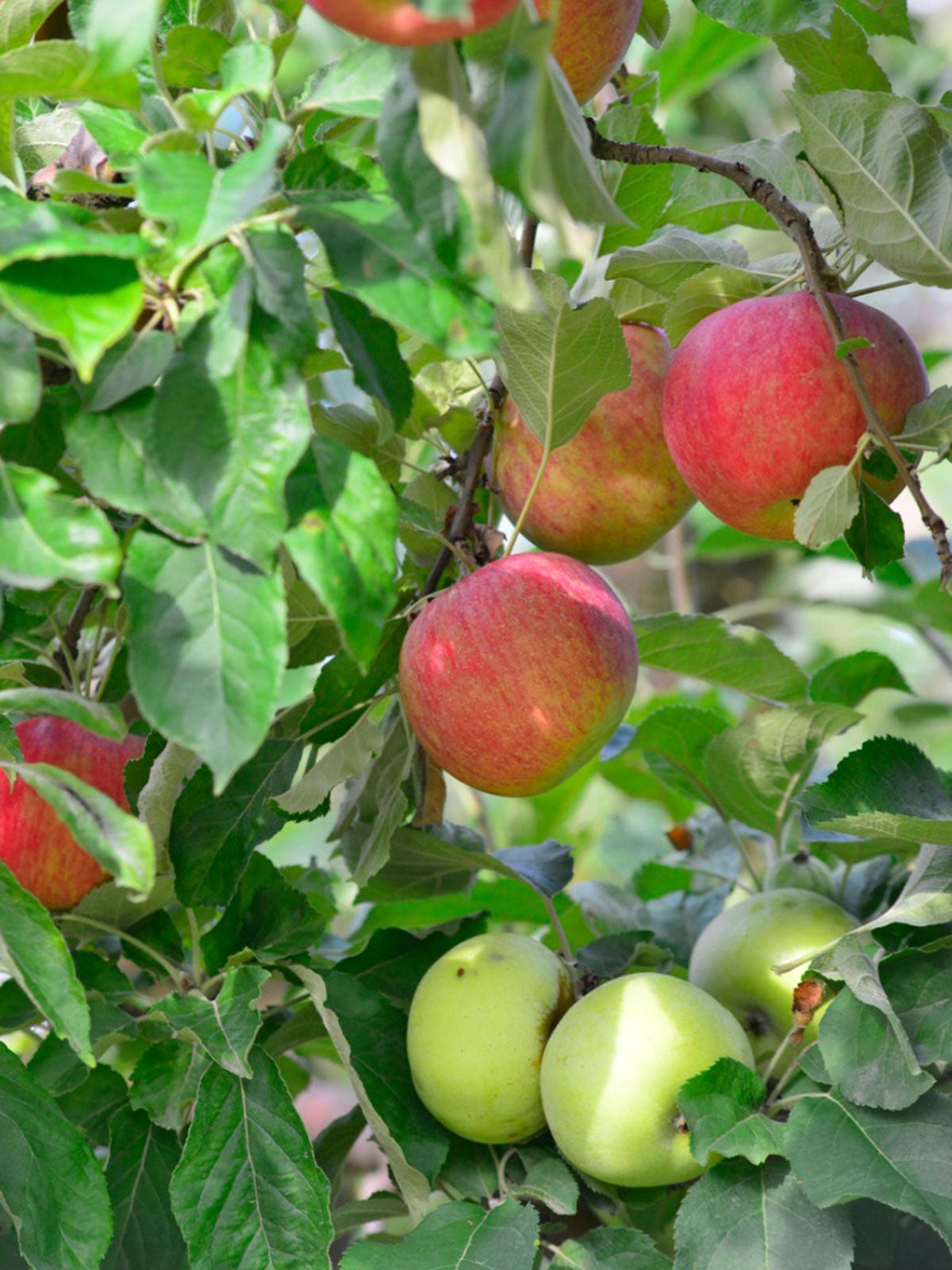Fruit Salad Tree Thinning: How To Remove Fruit Salad Tree Fruit


If you crave a fruit salad right from your garden, you should invest in a fruit salad tree. These come in apple, citrus, and stone fruit varieties with several types of fruit on one tree. In order to get your tree off to a good start you must train it young. Balancing fruit salad tree limbs will develop a stronger tree that can bear the weight of all those delicious fruits.
Why Remove Fruit Salad Tree Fruit?
The breeding programs for fruit trees are so advanced that you can now have a wide variety of fruits on the same tree. In the first few years, you should thin fruit on a fruit salad tree to avoid stressing young limbs.
Fruit salad tree thinning will allow the plant to spend more energy on developing strong limbs and a good scaffold that will support future crops. The time and method of pruning will encourage good growth.
Fruit salad trees are made by grafting the mature scion material from various fruit trees to a rootstock. Since the plant material was mature, the trees could fruit within six months. While this may be very exciting, it can be bad for the young branches which are not thick enough for fruit and could break.
Additionally, the plant will be directing its energy to forming the fruit instead of bulking up its limbs. This is why experts recommend you remove fruit salad tree fruit for the first and second years.
When to Thin Fruit on a Fruit Salad Tree
These trees bloom in spring and begin producing tiny fruits shortly after petal drop. Depending upon species this will be around April or May. If you begin fruit salad tree thinning too early stone fruits can split but thinning too late can cause remaining fruit to be too small. Fruits are ready to be thinned 35 to 45 days after bloom on average. Typically, you thin at a certain size.
- Apples and Pears - 1/2 to 1 inch (1-2.5 cm.)
- Stone fruits - 3/4 to 1 inch (2-2.5 cm.)
- Citrus - As soon as visible
Methods of Thinning
This practice of removing some fruit is beneficial to the tree but care must be taken to prevent any harm. You can use your index finger and thumb in a pincher motion and twist off fruit. This is useful on young trees that are not yet tall.
Sign up for the Gardening Know How newsletter today and receive a free copy of our e-book "How to Grow Delicious Tomatoes".
However, balancing fruit salad tree limbs by thinning is also a good idea for mature trees to prevent disease and allow existing fruit to grow larger. In this case, sterilize sharp pruning shears or a pole and cut off excess or crowded fruit. It is important to clean the cutting tool to avoid spreading disease.
With just a little effort thinning the tree will support a bigger crop while also promoting a healthier tree.

Bonnie Grant is a professional landscaper with a Certification in Urban Gardening. She has been gardening and writing for 15 years. A former professional chef, she has a passion for edible landscaping.